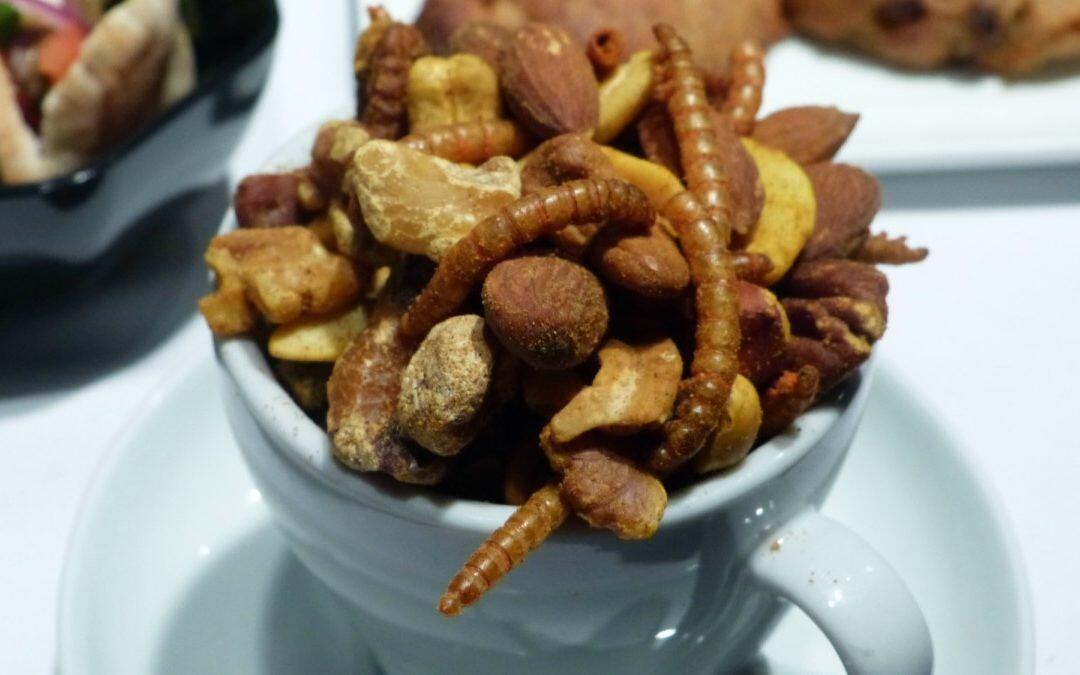According to a recent news report, insects are heading to Canadian grocery shelves. It’s not an attack of killer ants or an infestation of locusts; rather these insects are of the edible variety destined to be sold for consumption.
You may have just said “ick”, but for some years now environmentalists and foodies have hailed bugs as the future of eco-friendly protein. Sustaining the environment while trying to feed the over seven billion mouths on our planet has become increasingly challenging. As author Paul Roberts vividly explains in his book The End of Food, the existing system of making, marketing and moving food is failing because very year it is becoming less and less compatible with the growing population. While there is more high-volume and cheaply manufactured food than ever before, the quality of our milk, meat and crops has steadily declined. And the quality of soil and water used to produce this food has also been compromised. Also, consider the great paradox of the existing system: there are nearly one billion people in the world who are considered obese and another one billion who don’t get enough to eat.
People eating insects is by no means a new concept. The ancient Romans and Greeks ate beetle larvae and locusts, and Aristotle wrote about harvesting cicadas to eat as well. Some communities in Sub-Saharan Africa and East Asia have a strong culinary tradition of bug consumption, while in Western countries a few high-end restaurants have put insects on the menu.
In 2014 the Food and Agriculture Organisation (FAO) of the United Nations held the first “Insects To Feed The World Conference” to promote the global consumption of bugs. Soon the concept appeared to gain momentum with Time magazine offering a list of top-10 bug recipes (complete with tasteful colour photographs) in the health section of its April 22, 2015 issue. In it chef Mandy Oaklander gushed about her favourite one: “My very favourite edible insect recipe is Spicy Critter Fritter made with ground crickets, aka cricket flour. Cricket flour bakes and cooks much like other nut flours with great binding ability and a nice nutty aroma and flavour.”
Later that same year, The Economist offered Londoners a free sample of insect ice cream as a part of its experiential campaign to tempt new subscribers. Containing actual insects, the iced treat was intended to support the magazine’s “long-standing enthusiasm for insect consumption as a ready source of protein to feed a burgeoning global population.”
When the problem is how to feed everybody while at the same time trying to sustain the environment, entomophagy or the practice of eating insects is seen as a healthy and eco-friendly food solution. In every 100 grams of dried caterpillars, there are about 53 grams of protein, about 15 percent of fat and about 17 percent of carbohydrates. Compare this to more traditional sources of protein such as a 100-gram serving size of lean ground beef which contains about 27 grams of protein and a 100-gram serving of broiled cod that provides a little over 28 grams of protein. According to the report from the United Nations Food and Agricultural Organisation, insects are not only an economical, environmentally-friendly source of high-quality protein, they’re also high in minerals, including iron, copper, magnesium, phosphorus, manganese, zinc and selenium. Additionally, insects contain dietary fibre.
Robert Allen, who is Food Outreach Administrator for the newly formed North American Edible Insect Coalition (NAEIC) predicts that “as more people realise the economic and nutritional benefits of insects as a food and feed, increased investments in infrastructure, research and development will spur continued growth and interest from both established industry giants and the burgeoning entrepreneurial sector.”
On December 2, 2016, Canada’s largest supermarket retailer, Loblaw, sent out a press release announcing food trends it was considering for 2017. The company spokesperson said that “Canadians are more interested than ever about where their food comes from and the effect it has on the world around us … and for this reason Canadian consumers are choosing a wider range of alternative proteins, such as pulses, plants and even insects.” The spokesperson admitted that “although the immediate future of insect consumption in Canada is likely focused on using them as feed for livestock, we are seeing consumer products, such as cricket flour, becoming more mainstream.”
Source: http://bit.ly/2nlYmIK












